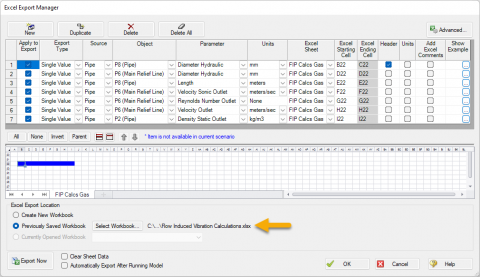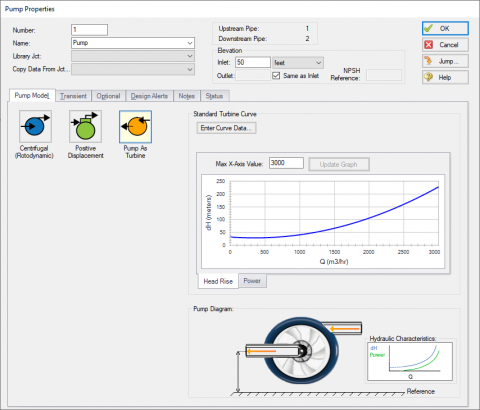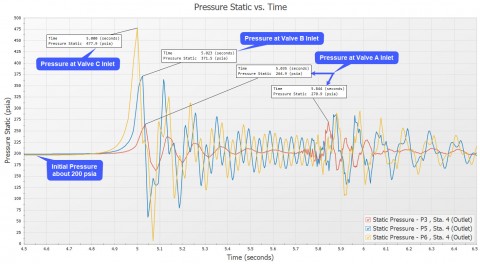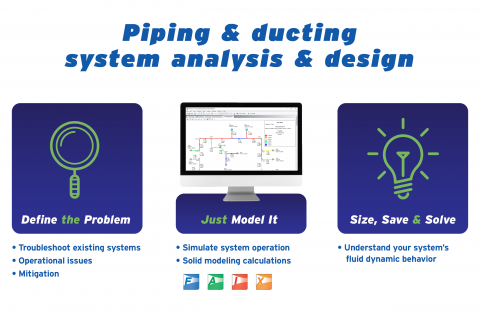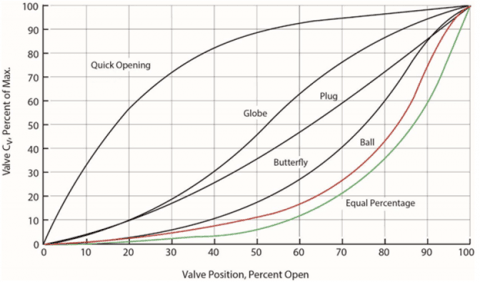AFT Blog
The Los Angeles Aqueduct conveys water from the Owens River in the Eastern Sierra Nevada mountains to the city of Los Angeles. The system provides 80% of the water to Los Angeles. Part of the aqueduct system travels through the 5.5 mile (9 km) Elizabeth Tunnel. The San Andreas fault cuts across the tunnel and a major earthquake at this location has the potential to cut off this water supply to the city for over a year.
AFT Fathom can EASILY size valves AND orifice plates with a SINGLE Control Valve junction! There is no need to perform strenuous hand calculations to determine a valve Cv or an orifice diameter. Just specify the system boundary conditions, pipe input properties, and the desired flow rate (or pressure) and AFT Fathom will calculate the Cv, K factor, and equivalent orifice diameter/area for you all at once! Figure 1 illustrates a control valve junction at the location of a valve or an orifice plate. For known flow, use a Flow Control Valve (FCV). For known upstream pressure, use a Pressure Sustaining...
Well, it turns out lots of people. My first experience with "funny fluids" was in graduate school. One of my fluids professors had recently completed his doctoral thesis on funny fluids also known as non-Newtonian fluids. I got to see some of his graduate students do some crazy experiments with polymer additives to otherwise boring Newtonian fluids.
AFT Arrow uses Newton iteration to find a simultaneous solution for all junction pressures. Well, maybe not all junctions. When “Use Exhaustive Tolerance Criteria” is NOT selected, AFT Arrow will only check junction pressures that find their way into the solution matrix. The AFT Arrow solver builds a matrix of equations based on the number of flow splits in the model. Each flow split must have a common pressure that is consistent with the flow and pressure drop in all of the connected pipes. Finding the right pressure for each flow split can become rather tricky. To find the pressure using...
Coming Soon To a Computer Screen Near You: AFT Impulse 5 - Act Now To Get New Features at Old Prices
We are excited about all the new features coming in our AFT Impulse 5 waterhammer and surge modeling software. We plan to release this much anticipated new version before the end of the year.
With AFT products, the Scenario Manager is an incredibly powerful feature that allows one to model several different cases in only one model file. This includes different operating conditions, multiple pump configurations, different piping, system expansions, etc. The list of different cases to model is essentially endless! Now, what if you have a single system and you would like to quickly model several cases where perhaps only a few parameters are changing? You can start by building a single system on the Workspace. Then you can use the “Duplicate Special” feature in the Edit menu to duplicate the entire system and...
If you have a system where there are several area changes throughout the piping, modeling every single area change and connecting pipe can become taxing and time consuming. Also, the more pipes and junctions that are in a model, the higher the complexity. With AFT software, it is very simple to include the area change losses in the pipes themselves! As seen in the Pipe Fittings and Losses screen shot below, there are four area change types that can be used and either abrupt or conical shapes can be modeled. The key to determining which expansion or contraction type to use...


